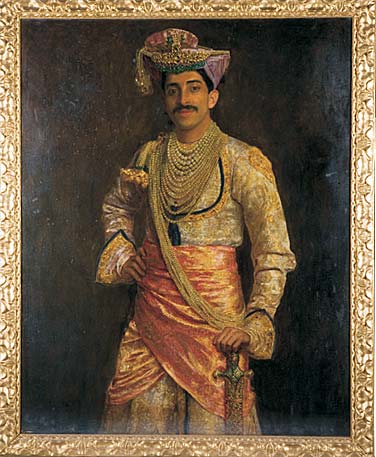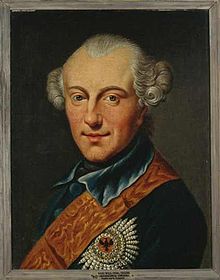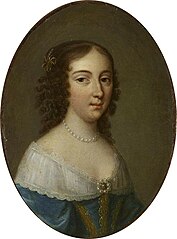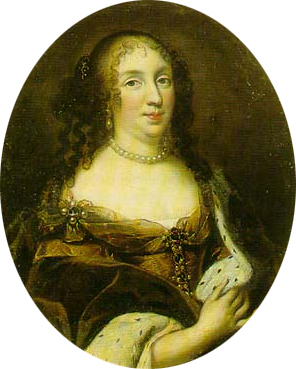Ada Douglas Wetherill.
[Bio1:Wikipedia]
[Bio2:Duleep Singh website]
 |
| Jung Bahadur Rana of Nepal @Wikipedia |
Prime Minister of Nepal.
His lovers were:
 |
Laura Bell |
1) Laura Bell (1829-1894).
British courtesan & evangelist.
Daughter of: Robert H. Bell, Bailiff of Marquess of Hertford
Wife of: Captain August Frederick Thistlewayte, (married 1852).
" . . . After 1849 Laura Bell moved to London where her conquest of Jung Bahadur, a Nepalese Prince and prime minister and virtual ruler of Nepal from 1846-1877, established her reputation as a courtesan. It has been claimed that in the short time that Laura Bell was his mistress she deprived him of a quarter of a million pounds." (Hidden Gems & Forgotten People)
" . . . Laura Bell was given 250,000 pounds by the Nepalese Prince Jung Bahadoor -- about 12 million pounds today, and whether it was for a single night, as is sometimes suggested, or spread over the whole period of their acquaintance is beside the point. . . ." (Madams: Bawds & Brothel-Keepers of London)
 |
Lola Montez |
2) Lola Montez (1821-1861)
Irish dancer, actress & courtesan
" . . . She was at the Jardin Mabille that afternoon when Jung Bahadur arrived as she was performing at the Bal Mabille, an institute of dance founded in 1831 AD. She coquettishly approached Jung Bahadur while he was practicing his shooting at a range. The chivalrous Jung saw the young beauty and offered her his gun to shoot. Lola took the gun and accidentally pulled the trigger, the bullet hitting the thigh of Colonel Dhir Shumsher. The wound was not a serious one and Jung laughed out loud in a guffaw, the accident considered a minor episode in the larger design of things to follow. Jung Bahadur was smitten by the twenty-nine-year-old Lola. An affair followed to the chagrin of Jung's retinue including his brothers Jagat and Dhir who thought it best to hush it. Henceforth, wherever Jung visited Lola was not far behind. IN a short while she was already a part of Jung's Nepalese contingent. It was rumored that Lola spoke broken Hindi, perhaps her parents had served in India, which made Jung's conversation with her less tiring that with Laura Bell. Jung had a lighter step henceforth." (Jung Bahadur Rana and the Dancing Damsels-The Sojourn in France @History Lessons Nepal) [Ref1] [Ref4]
| Karim Aga Khan IV @ismaili.net |
(1936-Present)
Imam of the Ismaili Muslims
1957-Present
Son of: Prince aly Khan & Joan Yarde-Buller.
Husband of:
1. Sally Crocker Poole. (1940-?), mar 1969, div 1994
2. Gabriele Renate von Thyssen, Prinzessin zu Leiningen (1963-?), mar 1998
Serial philanderer, workaholic philanthropist.
"The current Aga Khan's life has been a remarkable paradox: he is both a serial philanderer and a 'workaholic' philanthropist, a jet-setter renowned for his hedonistic habits and yet leader of a powerful and progressive Shia Islamic group. It is his ability to straddle both the religious and secular worlds that makes the Aga Khan so intriguing." (Mark Hollingsworth)
Aga Khan IV's physical appearance & personal qualities.
Aga Khan IV's physical appearance & personal qualities.
' . . . Darkly handsome, urbane and aristocratic . . . at 20, while still an economics student at Harvard, Prince Karim became the Aga Khan, a position for which he was ill-prepared. . . The Aga Khan has three passions -- women, horses and skiing. . . 'Continuity' is not a word associated with the Aga Khan's relationships with women. For the Aga Khan, women must be both subservient and decorative. 'There is no discussion on this,' he told his second wife, the Begum Inaara, at the beginning of their marriage. 'I determine things. You obey'"" (Mark Hollingsworth)
His lovers were:
1) Ariane Soldati.
" . . . And later Ariane Soldati, an Egyptian who came under the Aga Khan's spell after her husband died in a polo accident." (Mark Hollingsworth)
2) Sally Crocker Poole.
(1st wife)
"In 1968 he had met Sally Croker-Poole. Seduced by the Aga Khan's attentive courtship and gifts of expensive jewellery, Sally, the daughter of a colonel in the Bengal Lancers, accepted his proposal of marriage, converted to Islam and took the title of the Begum Salimah. . . But it was not long before the Aga Khan took mistresses and the couple assumed separate lives. . . In 1994 came the inevitable divorce. Sally emerged with 20 million pounds and auctioned off her jewellery for 17.5 million pounds through Christie's. Now 67, she now spends her time between her 25 million pound mansion overlooking Lake Geneva and 10,700 sq. ft. 15 million pound London apartment at Hyde Park Gardens, known as the 'Palazzo Apartment'. She has since remarried. Her husband, French lawyer Philippe Lizop, is deputy chairman of David Linley and Co." (Mark Hollingsworth)
"Born in 1971, Prince Rahim is the second child of the Aga Khan and his first wife. When K, as the Aga Khan is known, proposed to Sally Croker-Poole in 1960, the former model and 1958 debutante was warned about his infidelities. But Sally, whose first marriage to Lord James Crichton-Stuart had been a disaster, was ready to settle down. She had had a series of boyfriends -- financier Sir James Goldsmith, tipster Charles Benson and backgammon hustler Phillip Martyn -- but all were gamblers and Sally wanted stability. She and the Aga Khan went on to have three children: Princess Zahra, 37, Prince Rahim, 36, and Prince Hussain, 34." (Mark Hollingsworth)
3) Beatrice van Pallandt
"Born in 1971, Prince Rahim is the second child of the Aga Khan and his first wife. When K, as the Aga Khan is known, proposed to Sally Croker-Poole in 1960, the former model and 1958 debutante was warned about his infidelities. But Sally, whose first marriage to Lord James Crichton-Stuart had been a disaster, was ready to settle down. She had had a series of boyfriends -- financier Sir James Goldsmith, tipster Charles Benson and backgammon hustler Phillip Martyn -- but all were gamblers and Sally wanted stability. She and the Aga Khan went on to have three children: Princess Zahra, 37, Prince Rahim, 36, and Prince Hussain, 34." (Mark Hollingsworth)
3) Beatrice van Pallandt
Prinzessin von der Schulenburg.
Daughter of: Frederik, Freiherr van Pallandt.
Wife of: Jeffrey Werner von der Schulenburg. married ?, divorced 2005.
Natural Offspring:
Daughter of: Frederik, Freiherr van Pallandt.
Wife of: Jeffrey Werner von der Schulenburg. married ?, divorced 2005.
Natural Offspring:
a. Beatrice von der Schulenburg.
4) Milena Maffei.
" . . . One mistress, Italian beauty Milena Maffei, hung around for years in the hope that he would divorce Sally. . . ." (Mark Hollingsworth)
5) Pilar von Goess. (1956-?)
Grafin von Goess.
Daughter of: Franz Anton, Graf von Goess & Ann Nichols.
" . . . Then there was Austrian Pilar Goess who had posed nude for Playboy magazine. . . ." (Mark Hollingsworth)
Daughter of: Franz Anton, Graf von Goess & Ann Nichols.
" . . . Then there was Austrian Pilar Goess who had posed nude for Playboy magazine. . . ." (Mark Hollingsworth)
[Ref1:Alexander Palace]
 |
| Osman Ali Khan Nizam of Hyderabad @Wikipedia |
(1886-1967)
"Prince Mukarram Jah was crowned the 9th Nizam of Hyderabad in 1967 following the death of Osman Ali Khan. He soon found himself the target of literally hundreds of lawsuits as descendants of the 7th Nizam (who had fathered at least 200 illegitimate children, by over 80 mistresses!) vied for a share of Osman Ali Khan's enormous fortune...." (amnet.net.au)
". . . He had a prodigious appetite for sex, and had one of the largest private pornographic collections in the world---using hidden cameras inside his zenana and private guest quarters. Before he died, he sired children from 86 mistresses in his harem and had more than 100 illegitimate children. behind a legacy of legal disputes with hundreds of descendants fighting over money and real estate." (New Indian Express)
 |
| Tukoji Rao Holkar III Maharaja of Indore @Wikipedia |
Maharaja of Indore.
His lover was:
Mumtaz Begum.
" . . . In the early 1920s, the Indore court had accused Maharaja Tukoji Rao Holkar's mistress, Mumtaz Begum, who had fled to Bombay, with stealing state jewels and put out a warrant for her extradition and arrest. . . ." (Royal Patronage, Power and Aesthetics in Princely India)
"Woman who had themselves lived in princely zenanas also became film actresses or brought their stories to the big screen. The notorious Malabar Hill Murder, which came to trial in the Bombay High Court in 1925, involved a Muslim courtesan, Mumtaz Begum, and her princely lover Maharaja Tukoji Rao Holkar of Indore. Mumtaz had lived since her adolescence as a dancing girl in the Indore zenana as the Maharaja's lover. In 1925, she escaped to Bombay, where she found a wealthy new protector, a Muslim businessman by the name of Bawla. While on an evening drive with Bawla in Malabar Hill, her car was attacked and her lover murdered by emissaries of the Indore household. Through the intervention of three British army officers, who were returning from an afternoon round of golf she survived the incident and lived to give damning oral evidence, which eventually forced the Maharaja to abdicate in 1926. This tale all the ingredients -- love, sex, murder, 'debauched' royalty and colonial repression -- for filmi melodrama. Mumtaz took her story to Bombay were it was transformed into the film Kulin Kanta (directed by Homi Master, 1925), an early form of the courtesan genre in Hindi cinema. Later, it was rumoured she left for the even greener pastures of Hollywood. Similarly, Sitara Devi, a performer at the court of the Nawab of Rampur, became a prominent film actress in the 1930s." (Royal Patronage, Power and Aesthetics in Princely India)
"Woman who had themselves lived in princely zenanas also became film actresses or brought their stories to the big screen. The notorious Malabar Hill Murder, which came to trial in the Bombay High Court in 1925, involved a Muslim courtesan, Mumtaz Begum, and her princely lover Maharaja Tukoji Rao Holkar of Indore. Mumtaz had lived since her adolescence as a dancing girl in the Indore zenana as the Maharaja's lover. In 1925, she escaped to Bombay, where she found a wealthy new protector, a Muslim businessman by the name of Bawla. While on an evening drive with Bawla in Malabar Hill, her car was attacked and her lover murdered by emissaries of the Indore household. Through the intervention of three British army officers, who were returning from an afternoon round of golf she survived the incident and lived to give damning oral evidence, which eventually forced the Maharaja to abdicate in 1926. This tale all the ingredients -- love, sex, murder, 'debauched' royalty and colonial repression -- for filmi melodrama. Mumtaz took her story to Bombay were it was transformed into the film Kulin Kanta (directed by Homi Master, 1925), an early form of the courtesan genre in Hindi cinema. Later, it was rumoured she left for the even greener pastures of Hollywood. Similarly, Sitara Devi, a performer at the court of the Nawab of Rampur, became a prominent film actress in the 1930s." (Royal Patronage, Power and Aesthetics in Princely India)













